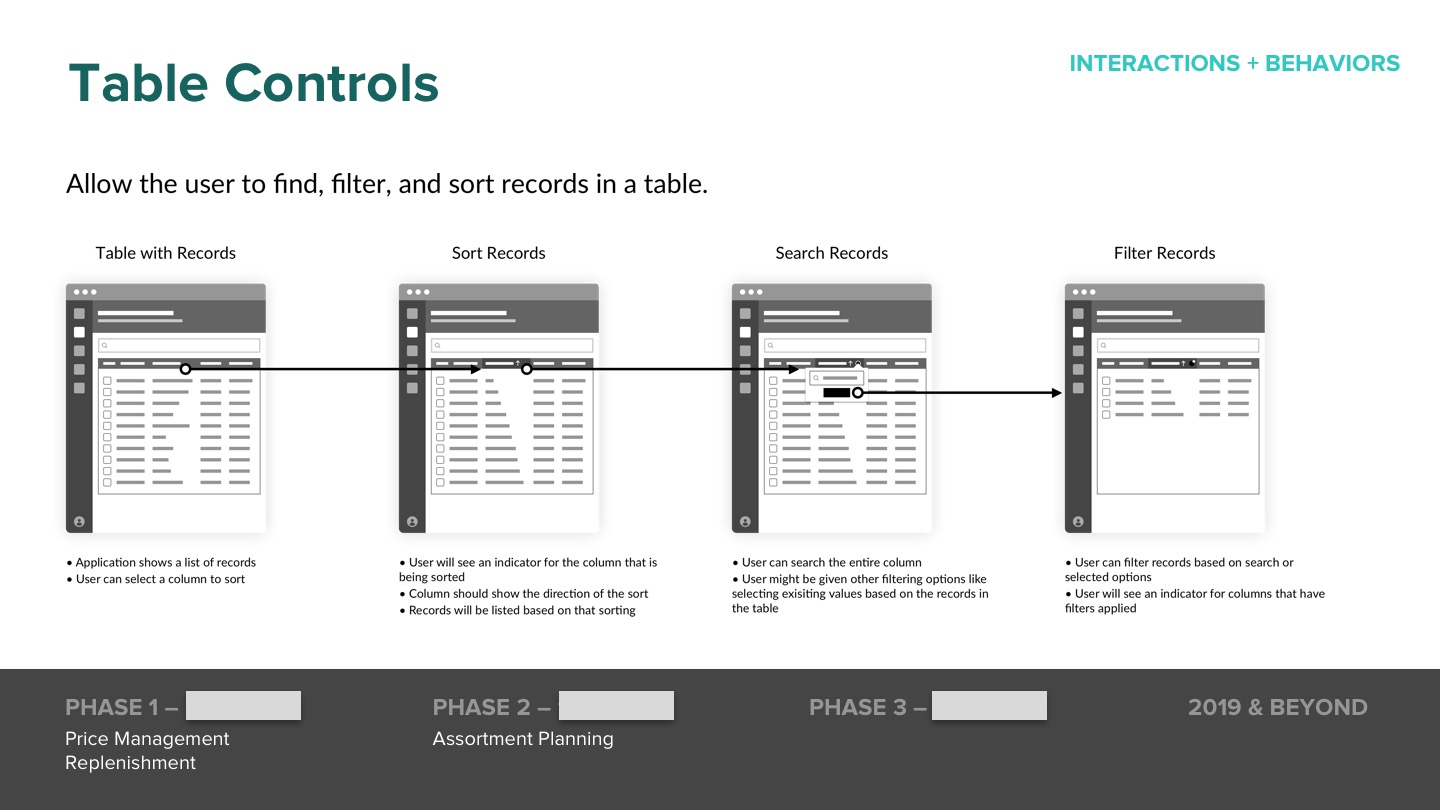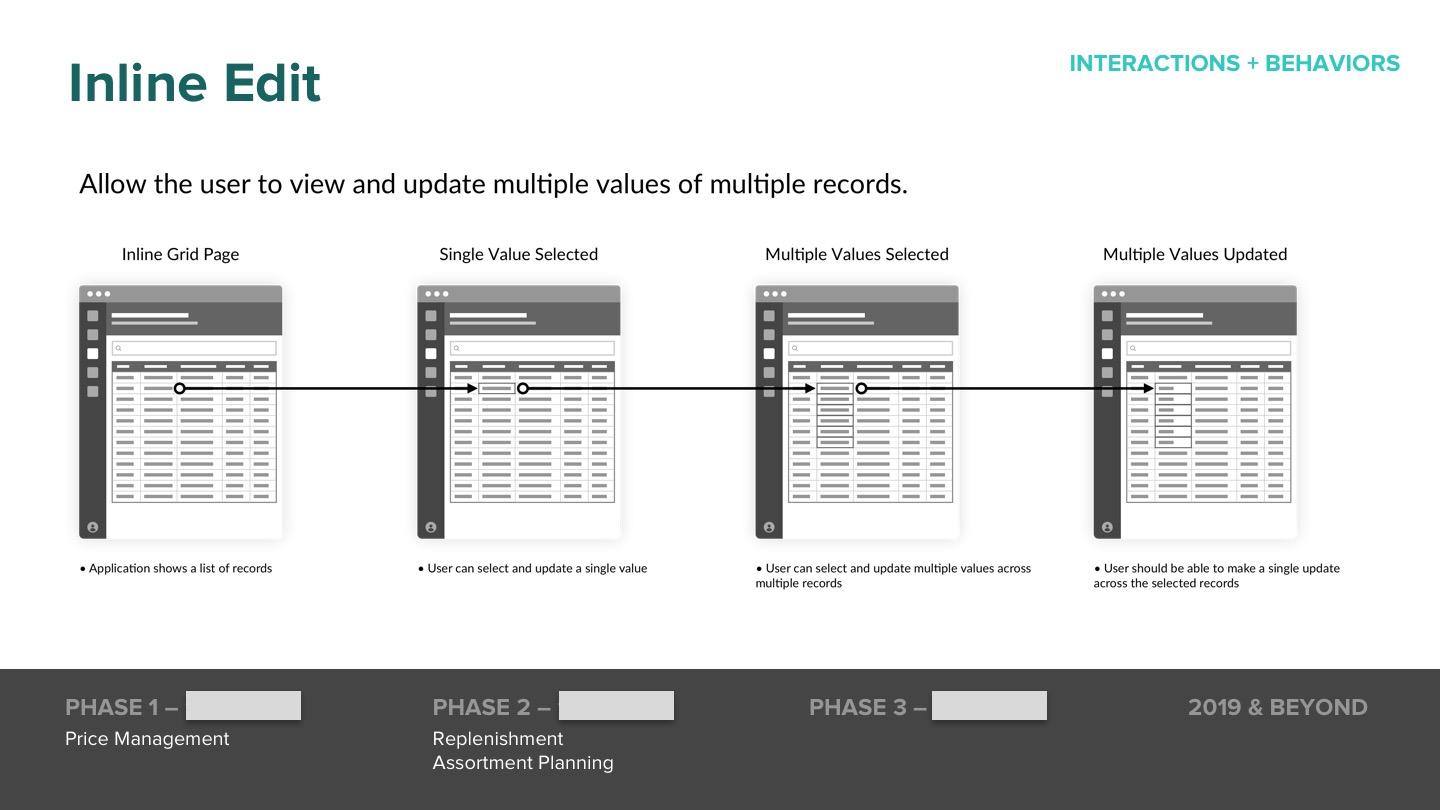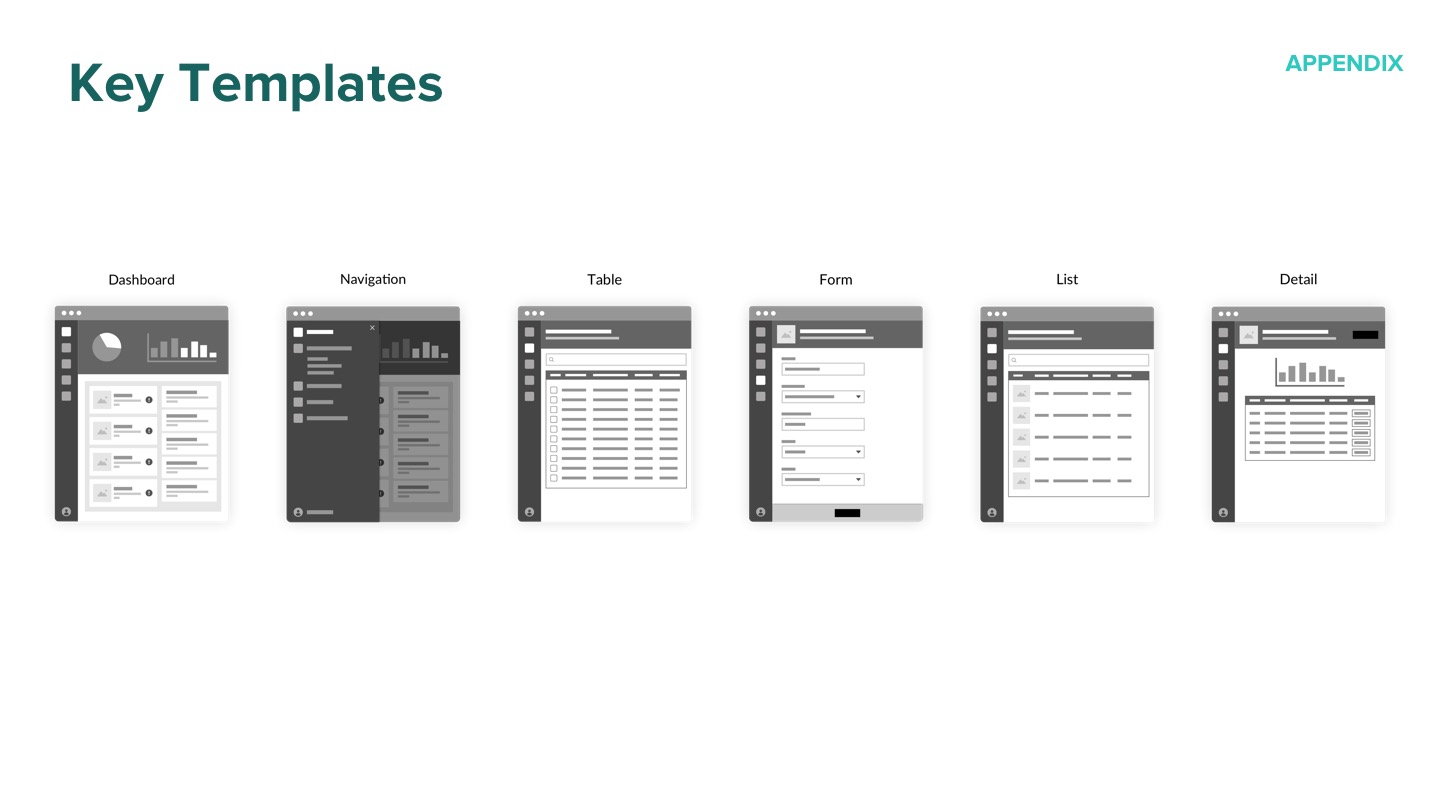Product Case Study
Connecting User Experience Across Retail Platforms
Infor needed to connect a suite of back-office applications built on different tech stacks for several large-volume national retailers, including Whole Foods Market, Home Depot, and Crate & Barrel. The applications ranged from merchandising systems affording master data administration across the platform, to predictive analytics engines to give retailers the ability to optimize their supply chain and rapidly respond to shifting demand.
Across the suite, UI design lacked uniformity, as the portfolio had been built from various mergers and acquisitions. Even more critically, the different apps each had their own interaction patterns and underlying logic (front-end and back-end). These differences meant users had to re-enter data and forced them into clunky, cross-application workflows. Inconsistency bred frustration and mandated re-training when users’ roles or deliverables changed — training that represents a significant cost to retailers.
This case study describes how my team developed a more unified user experience that would meaningfully impact our customers’ business.
Process
The first step in the re-design process for this technically complex undertaking was to better define the problem beyond “inconsistent UX.” I led a number of workshops with our platform development teams to set two measurable outcomes for my team:
Users should not need to re-learn navigation or their basic operational toolkit to get their job done, and workflows should maintain a single user experience even when crossing platforms.
To establish personas and delineate their workflows, my team focused efforts on site-visits and remote research with customer employees. We conducted interviews, observed their use of tools, and led participatory sessions to map workflows in and outside of our software. And on top of that, we surveyed these users’ full software ecosystems, to understand what applications, services, and devices they used throughout their workday.
We wanted to serve each unique customer without falling into the trap of customizing solutions for each business. Our approach to extensibility and configurability was derived from research that identified the extent to which each customer-partner’s business process diverged from the canonical modern retailer.
Experience Strategy & Roadmap
Alongside the human-centered research, I led an audit of UX and UI patterns in each of the various retail products that would be connected into the cross-platform suite. My team cataloged and unified navigation paradigms, feedback mechanisms, data operations (within forms, grids, etc.), search and query patterns, and more. These patterns formed our palette: app development teams would retain their best examples and adopt others from counterpart platforms. We simplified key examples to reflect the most common workflows to ease communications with implementation teams and to facilitate future user onboarding.
Pattern Taxonomy & Adoption Roadmap
My team’s deliverable for Infor’s retail suite ended up being a bespoke design system, consisting of broadly defined use cases and user flows, all diagrammed in wireframes. Our goal was to help the development teams understand their products within the context of a system, and help them retrofit their front-end experiences to better meet the expectations of the users and the customers’ business needs. (We were not yet looking to enforce a single look and feel across products.)
In the end, I synthesized the team’s design recommendations into a global pattern taxonomy, and managed stakeholders to arrive at a shared roadmap for the product retrofit and ongoing adoption. With my partners on development teams we presented the experience roadmap to key customers and garnered support for the retrofit.




















After getting buy-in from customers and development teams, I adapted this approach into a new UX assessment methodology rolled out across Infor.

